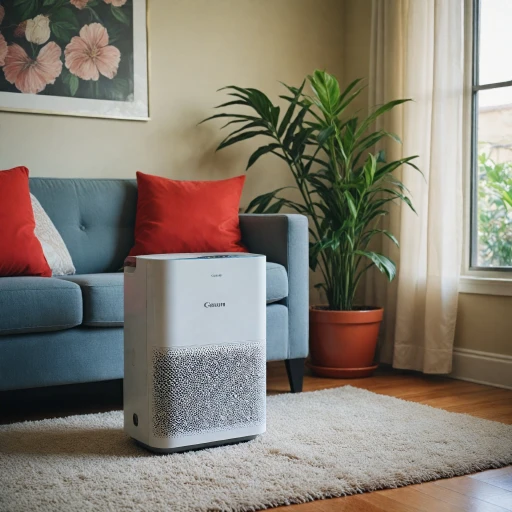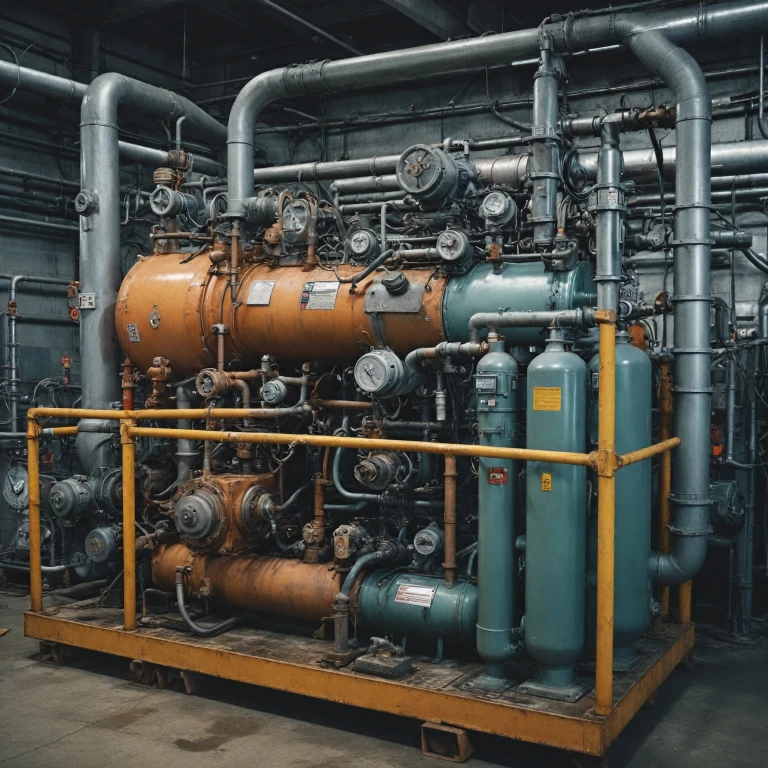What is a Water and Oil Separator?
Defining This Essential Component in Air Systems
An integral part of any well-functioning air compressor setup is the water and oil separator. This device plays a pivotal role in the maintenance and efficiency of compressed air systems, particularly in applications where moisture and oil can compromise operations and product quality.
At its core, a water and oil separator is designed to filter out both liquid condensates like water and compressor oil from the stream of compressed air. These separators are indispensable in ensuring that air compressors run smoothly and deliver high-quality, contaminant-free air.
Water and oil separators work by using various filtration methods to separate the water and oil particles from the air. This is critical because, during the compression process, moisture and oil mist inevitably mix with the air. Such impurities can lead to detrimental outcomes, such as corrosion of tools and machinery, compromised end-product quality, and potential system failures.
By strategically incorporating various filtering techniques, separators ensure efficient operation by maintaining the cleanliness of the compressed air, thereby safeguarding equipment longevity. Without these systems, air compressors face excessive condensate buildup, forcing the machinery to work harder and reducing its lifespan.
For anyone operating with air systems, understanding the necessity and function of a water and oil separator cannot be overstated. This becomes especially crucial in industrial and shop environments across the United States, where reliable performance is a must-have for maintaining operational standards. Learn more about enhancing indoor air quality with these separators
here. This knowledge sets the foundation for recognizing why these systems are essential in promoting high efficiency and durability in your compressor setup.
Why is a Water and Oil Separator Essential?
Essential Role in Air Systems
There’s a compelling reason why a water and oil separator is an indispensable component in any air compressor setup. The essence of its functionality lies in its ability to prevent the damaging effects of moisture and oil within compressed air systems. Without a separator, water and oil mixtures accumulated in the air stream can wreak havoc on various components such as filters, tanks, hoses, and even air tools.
When compressed, air tends to force out moisture, which may mix with compressor oil. This contaminated condensate can lead to corrosion, decreased efficiency, and even damage the integrity of pneumatic systems. By effectively separating water and oil from the air stream, separators protect components like compressor filters and ensure high efficiency in operations.
A water and oil separator achieves its goal by harnessing pressure to force these liquids out of the air. This filtration step is critical in maintaining clean, dry air which not only extends the life of machinery but also ensures optimal performance of air-powered tools used in various industrial and shop settings. Moreover, it ensures the compressor oil remains uncontaminated, safeguarding the compressor's longevity.
Choosing a separator that aligns with your specific compressed air needs, such as the air cfm requirement or correct npt fitting size, enhances the efficacy of the separation process. For personalized advice on whether
air purifiers make the air dry, further insights can be found
here. Ensuring seamless integration of these components into your air systems enables a smoother operation and reduces the risk of encountering common issues experienced during maintenance.
Benefits of Using a Water and Oil Separator
Key Advantages of Implementing a Filtration System in Your Air Compressor
Utilizing a water and oil separator within your air compressor system offers several significant benefits. This essential component ensures that your air compression setup operates efficiently, effectively, and safely. Here’s why incorporating this system can be advantageous:
- Enhanced Efficiency: By removing contaminants such as water and oil, separators help maintain the efficiency of your air tools. Cleaner air means your air compressors and connected tools, like a spray gun or impact wrench, perform optimally, reducing unnecessary wear and ensuring longer lifespan.
- Protection for Equipment: The condensate that collects during compression can damage or degrade the performance of your system if not effectively filtered. Installing a separator ensures that moisture and oil do not compromise your air compressors or clog your air system pipes, preserving the functionality of your equipment.
- Cost Savings: Ensuring that your air system is free of impurities can result in significant cost savings. Fewer breakdowns and less maintenance mean lower repair costs. Moreover, cleaner air filtering through a high-efficiency system minimizes the need for frequent replacement of compressor filters and other components.
- Compliance with Industry Standards: Many industries, particularly in the United States, have stringent air quality standards. Using water oil and oil water separators helps your operations comply with these regulations, avoiding potential fines or operational shutdowns.
- Improved Air Quality: A properly maintained water separator ensures high-quality air circulation within your workspace. This is crucial not just for equipment but also for the health and safety of personnel working in areas where air compressors are in use. Cleaner air contributes to a healthier work environment and better overall workplace air quality.
Given these advantages, the strategic integration of a well-sized compressor and periodically maintaining its filters is essential for those who prioritize equipment longevity and effective performance. For guidance on optimizing the operational hours of your air compression installations, refer to this comprehensive guide on optimal operating durations.
How to Choose the Right Water and Oil Separator
Selecting the Best Water and Oil Separator for Your Air Compressor
Choosing the right water and oil separator for your air compressor system can be a game-changer in ensuring efficient operation and longevity. Here's a breakdown of key considerations when selecting this crucial component:
- Size and Capacity: The separator must match the capacity of your air compressor. Check the cubic feet per minute (CFM) rating to ensure compatibility. An correctly sized compressor and separator combination will enhance performance and efficiency.
- Material and Construction: Since separators deal with various types of condensate, opting for robust materials that resist corrosion or wear, like stainless steel or high-grade plastic, is prudent. This ensures the equipment lasts longer and functions effectively.
- Filtration Efficiency: The effectiveness of a separator is often determined by its filtration level. Choose a model with high-efficiency filters, capable of managing oil and water separation with precision, reducing the risk of compressor oil residue.
- System Compatibility: Ensure the separator is compatible with your existing air system components, including hoses, tanks, and filters. Standard measurements like National Pipe Thread (NPT) compatibility can simplify installation.
- Pressure and Flow Rates: Confirm that the separator can handle your system's specific pressure and flow rates. This helps avoid any bottlenecks or inefficiencies in the compressed air system.
- Maintenance and Replacement: Consider how easy it is to perform maintenance and replace parts. A user-friendly design promotes regular upkeep, essential for optimal operation and longevity.
By keeping these factors in mind, you can select a water and oil separator that enhances your air compressor's performance while maintaining the health of your overall air systems. Investing in a suitable separator also means fewer repairs and improved air quality throughout your workspace.
Installation and Maintenance Tips
Setting Up and Keeping Your Separator in Tip-Top Shape
When it comes to installing a water and oil separator, ensuring optimal placement and maintenance can enhance the efficiency and longevity of your air compressor system. Below, we explore practical tips for installation and maintenance/
- Installation Locations and Connection: Place your separator air system downstream of the air compressor before air reaches the tank or air tools. Be mindful of the air pressure and NPT fittings used, ensuring they match the optimal flow requirements and capacity of your system, often identified by cfm ratings. Proper installation reduces condensate risks while ensuring high-efficiency filtration.
- System Compatibility and Sizing: It’s crucial to select a separator that suits your sized compressor. Consider the total capacity in your air system, including the horsepower of compressors air. Selecting appropriately-sized compressor filters aids in maximum filtration efficiency and oil separation.
- Routine Checks and Maintenance: Regular inspection of seals, hoses, and connections helps prevent leaks in the compressed air system. Clean or replace air filters and activated carbon components periodically to maintain effectiveness. Address any low-performing areas promptly to minimize pressure drops.
- Professional Servicing: Scheduled professional maintenance ensures comprehensive checks on your system, verifying the integrity of every component, achieving effective water separation, and minimizing chances of contamination.
By adhering to these guidelines, users can optimize and maintain the performance of their water separators and oil separators, ultimately enhancing the efficiency and lifespan of their air compressor systems. Effective maintenance ensures all components function seamlessly, supporting overall performance and reliability in oil and water filtration across various operational settings.
Common Issues and Troubleshooting
Troubleshooting Potential Setbacks
Encountering issues with your water and oil separator in an air compressor system can be frustrating, but common setbacks are often manageable with a bit of know-how. Here's a look at some frequent problems and their potential solutions:
- Inadequate Water Separation: If the water separator isn't efficiently extracting moisture, it might be due to incorrect sizing or positioning of the separator in the air system. A separator correctly matched to the cfm requirements and properly installed should optimize performance.
- Excessive Oil in Compressed Air: Persistent oil presence may be a sign that the oil separator isn't functioning effectively. Dirty or clogged filters can be to blame, necessitating regular filter changes to maintain high efficiency in oil-water separation.
- Pressure Drop: High pressure loss might result from clogged elements within the separation system. Regular maintenance, including checking the npt fittings and cleaning or replacing blocked components, is vital in minimizing pressure drop.
- Condensate Accumulation: If condensate isn't draining smoothly, your system's automatic condensate drain could be malfunctioning. Ensuring it's clean and operational, or replacing outdated tools, might resolve the issue.
- Noisy Operation: Unusual sounds can indicate obstructed airflow or misalignment in the system. Inspect the compressor, hoses, and all connections for proper fitting and alignment to prevent noise and related inefficiencies.
Maintaining awareness of these common issues and taking proactive steps can enhance your air compressor’s lifespan and efficiency. Regular inspection of components like the tank and compressor filter, paired with proper installation of the separator air system, will safeguard against many issues. The overarching goal is to achieve effective water separation while retaining optimal airflow in all compressor air systems.

